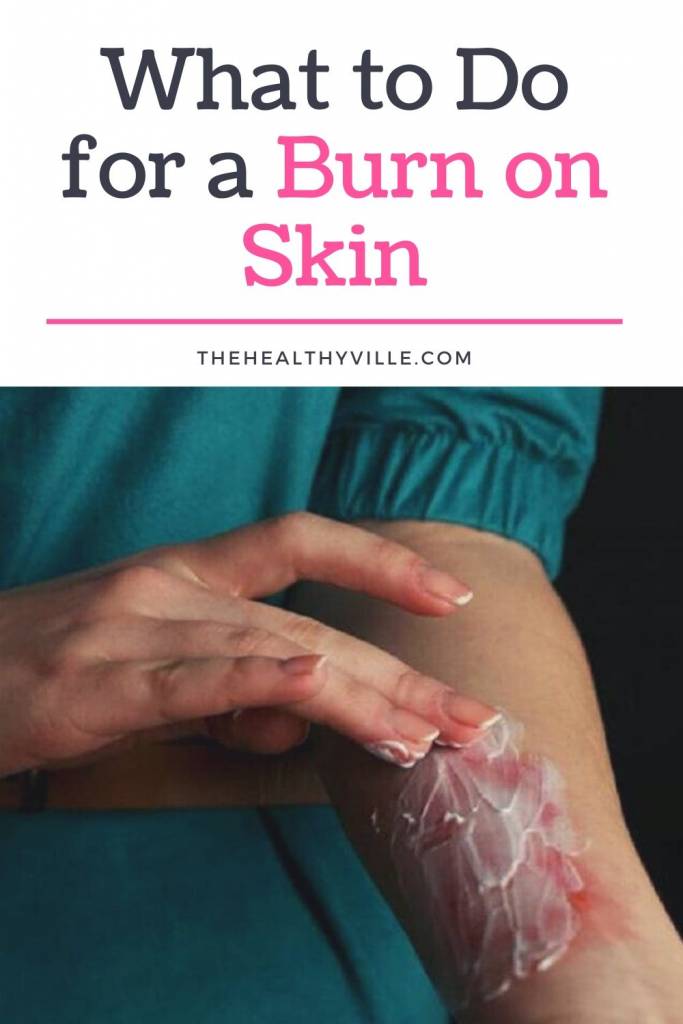What to do for a burn on skin? First aid is the initial step to take in this situation, as it will help you prevent scars from appearing. But learn what else you can do!
As a general rule, first aid is a medical concept that refers to the guidelines that are carried out to help someone. In this way, they are applied or requested in an emergency situation or that put a subject at risk. For example, in the event of an accident or if the patient has spontaneously developed a disorder.
Likewise, the measurements are usually carried out in the same place and can save the life of the person in danger. They also precede more complex methods that the medical team carries out in a specialized center such as a hospital.
What are burns?
Burns are currently frequent injuries both at home and in the workplace. Depending on their characteristics, they vary between minor injuries or wounds that put the patient’s life at risk.
On the other hand, it is an alteration in the skin that can be produced by various dangerous agents. For example, we can include extreme temperatures (both hot and cold). In addition, continued exposure to radiation from the Sun, contact with chemicals or electrical currents can also cause burns.
Our skin is a layer that protects our body from the external environment. However, when exceeding its limits, different types of injuries appear depending on the situation of the subject.
What are the types of burns?
According to the location and depth of the burns, we can differentiate between different types of burns. In this way we can find:
First degree burns
The skin reddens in the area exposed to the problem agent. Furthermore, the wound only affects the outermost layer of the skin, that is, the epidermis. Generally the pain is mild and an example is a classic summer sunburn. No blisters develop in the area, but slight swelling may appear in the area. Generally the patient will not present scars or long-term sequelae.
Second degree burns
In this case, the alteration affects both the epidermis and the dermis, a deeper layer of the skin. Also the coloration changes, it can appear with reddish, whitish or stained shades. The pain can become severe and inflammation normally develops in the burned tissue.
Normally a series of blisters develop over the wound. It is a natural defense mechanism of our body. In this way, the blisters protect our body from infections and the liquid inside helps to heal and regenerate damaged tissue. If the burn is severe, the subject may have scars for the rest of his life.
Third degree burns
Finally, this is the most serious type of burn possible. The tissue may appear whitish or black. This is because the damage extends to the deepest layers of the skin.
It even reaches the hypodermis or subcutaneous tissue, mainly made up of fat. As the nerve endings are also destroyed the patient does not feel any discomfort. Also, the wound has a tanned appearance and there is numbness in the area.
What to do for a burn on skin?
In any case, the medical team should consider both the degree and the extent and location of the burn to treat it correctly in the hospital. However, it is possible to perform first aid to calm the subject in the event of an accident. In this way, we must:
- End the cause of the accident or remove the patient from it. For example, from a source of heat, electric currents, etc.
- Check that the patient is breathing and pay attention to signs of shock and identify other possible more serious injuries.
- Apply cold water to the burned area for a few minutes to lower the temperature of the wound. Previously, the patient should be detached from the clothing near the problem area.
- Gently place damp gauze over the burn.
- Spread moisturizers or aloe Vera.
What to avoid?
- Tear off the clothing attached to the patient’s skin.
- Administer medications, alcohol, etc.
- Pop blisters from the wound.
- Cool the burn area for too long because it can cause hypothermia in the patient.
Don’t forget to SHARE what to do for a burn on skin with your friends and family on your social networks!

